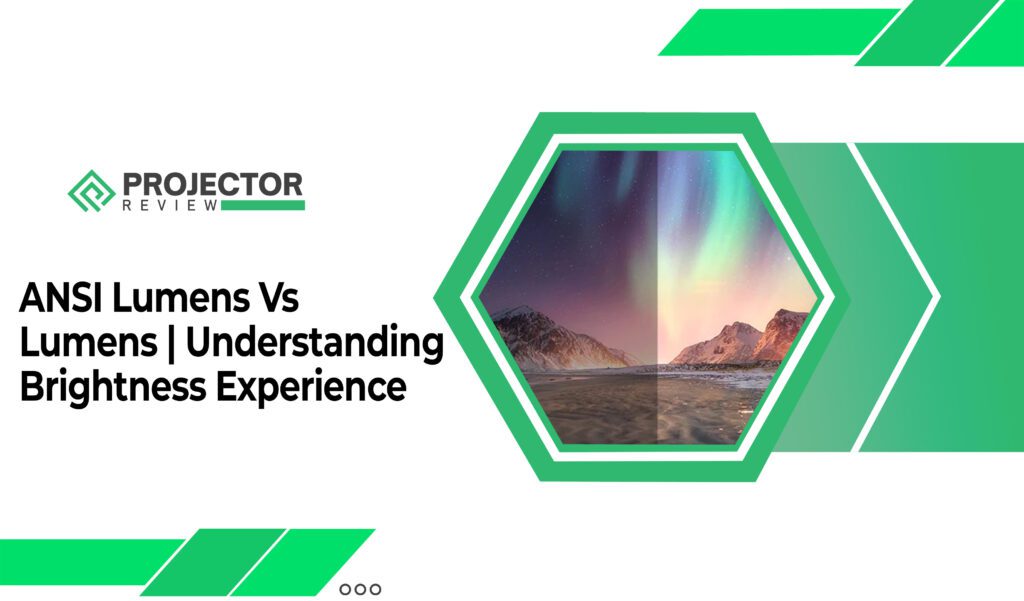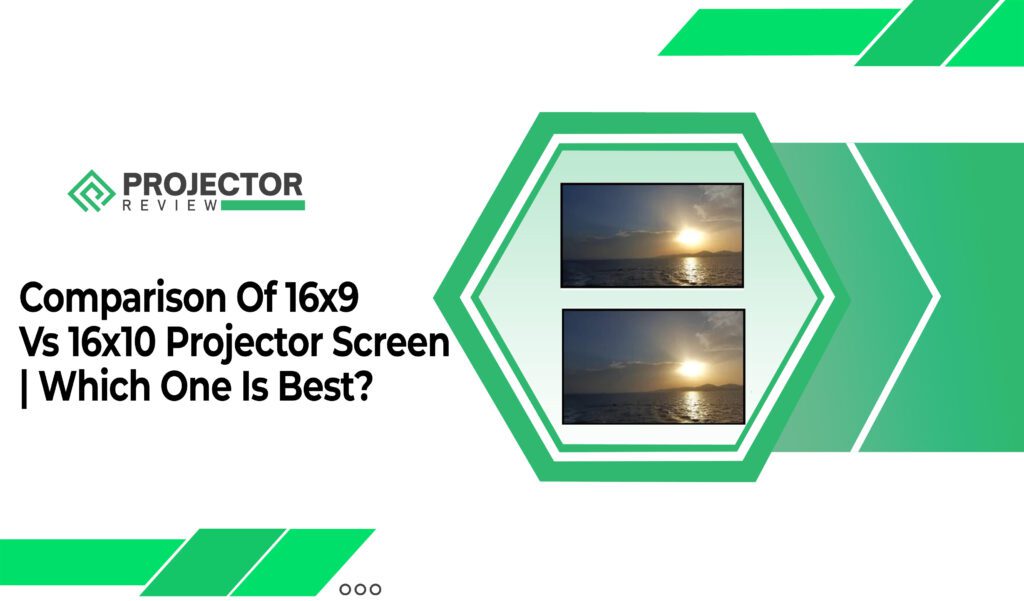What are the differences between a DLP projector and an LCD projector? and which should you choose based on your needs?
Don’t worry
In this article, we will make it easy for you to choose the best for you by explaining DLP vs. LCD projector in detail.
Even if it can get quite confusing when looking at these different projector variants, it quickly turns out that they are far from the mechanism of action and the manner in which they can be practically put to use.
DLP and LCD are the types of Digital Video Projection (DVP) technologies used to display the computer screen on a large LCD screen or on a wall. The main difference between DLP and LCD projectors is that DLP works as a reflective technology while LCD is a method. So let’s delve into this and see which one is better.
How Does An LCD Projector Work?
The LCD projector’s tinted mirrors block certain colors of light and let other colors through to digitally recreate any image you want to display. It uses roughly the same principles used to create cathode tube images or images on your glass screen.
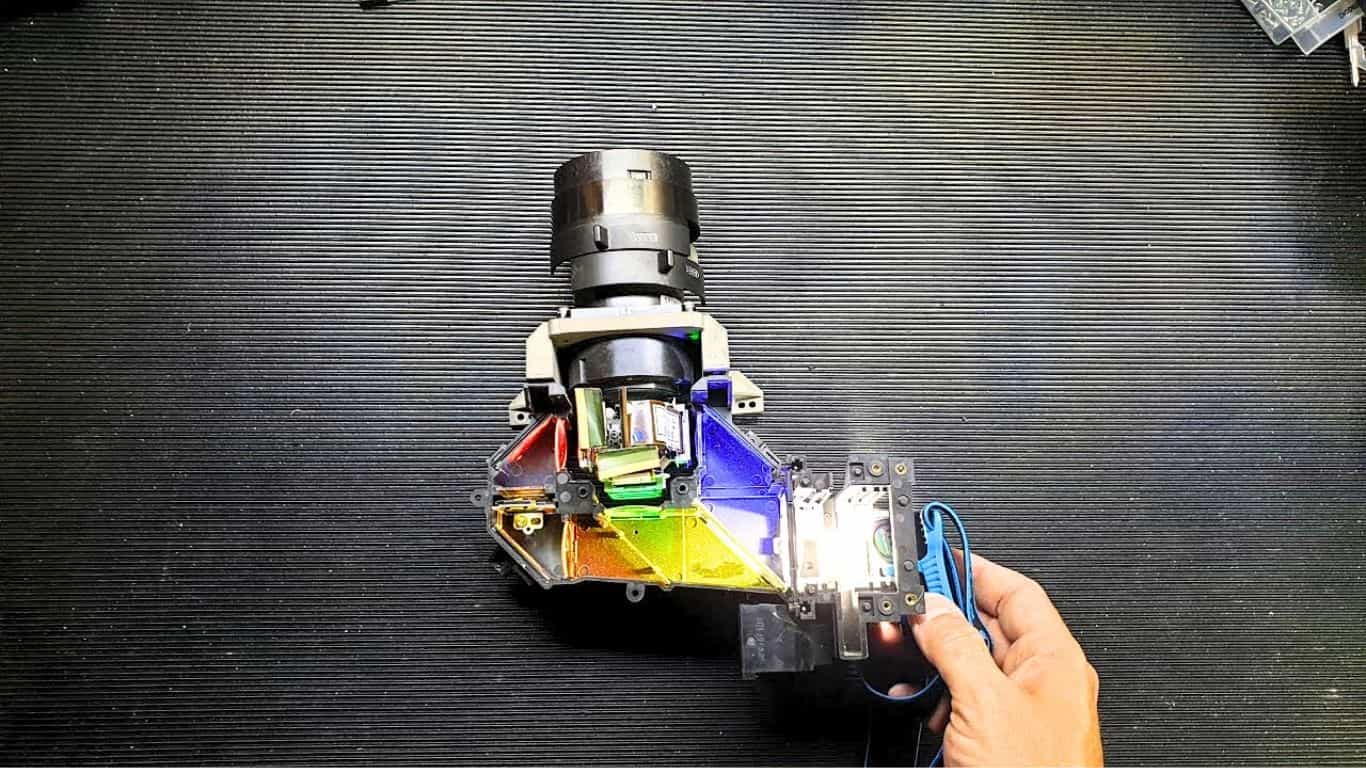

Each channel of red, green, and blue or “RGB” is separated and then converged by a prism after passing the LCD panel of the same name, which controls the saturation and intensity of each color for each displayed frame of a video or video game.
How Does A DLP Projector Work?
DLP projectors with a single matrix semiconductor chip can produce more than 16 million colors. The 3–chip models, on the other hand, can produce 35 trillion colors. Mirrors can be quickly repositioned to reflect light through the lens or directly onto a heat sink or “light tip”.
However, the proximity of each mirror within a chip makes it difficult to see the gaps between pixels, resulting in a sharper and smoother image compared to the technology used in LCD projectors.
DLP vs LCD projector – Key Difference
What Is an LCD Projector?
An LCD projector is a unit that projects an image with light that is transmitted through a prism and separated and sent to three different colored silicone plates.
We can immediately see a huge difference in the functionality of a DLP and LCD projector after reading the definition of the latter: while one relies on microscopic mirrors, another relies on the passage of light through silicon panels.
By changing the light that penetrates through each color panel, an LCD projector can produce different colors and intensities of colors. Without being too technical, this simply offers a similar, albeit slightly different, type of image when compared to a DLP variant.
It is generally accepted that LCD units can produce a sharper image, which can be beneficial in certain environments. The only real problem is that they are usually larger units and they don’t necessarily provide more benefit to all people, even though they take up more space.
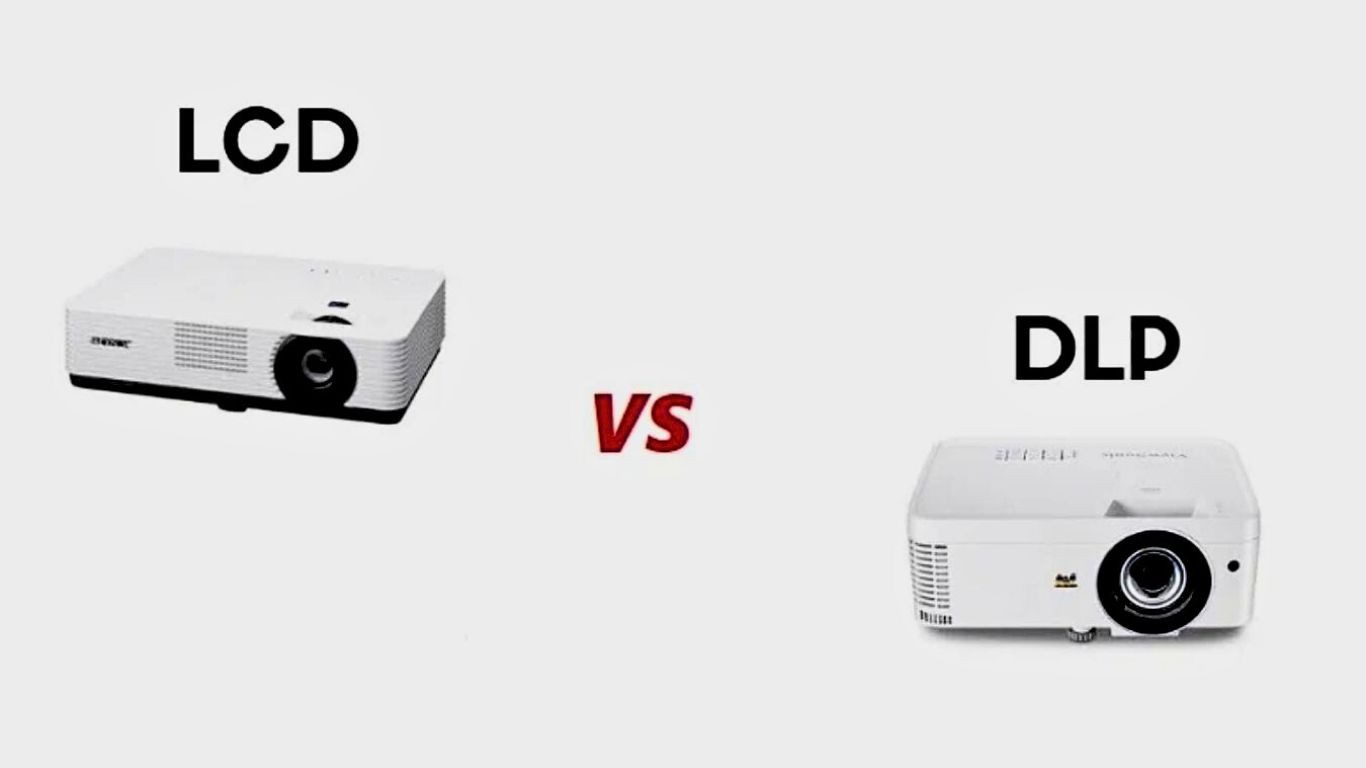

What Is a DLP Projector?
A DLP projector is a device that uses projection technology based on a chip containing a microscopic mirror, along with a rotating color wheel to create images. DLP technology produces brilliant images. DLP projectors work fast and are also great for 3D projectors.
DLP stands for Digital Light Processing. A projector falling into this category specifically works with built-in mirrors that are reflected off a flat surface via a color wheel to produce an accurate representation of the shape of the basic image that is fed to the projector unit.
You will find that this technology is used in almost all commercial projection environments, including movie theaters and business classrooms. DLP drives are also widely used in schools and are known to be very portable.
Uses Of DLP Projectors vs. Uses Of LCD Projectors
Both DLP and LCD projectors are used in home theaters, commercial movie theaters, corporate meetings, classrooms, churches, concerts, etc. However, there is one important difference between DLP and LCD and that is mobility.
LCD projectors are more suitable for indoor use in offices, schools, and homes because they require more cumbersome extension cords and wiring.
Due to their micro-mirror technology, DLP projectors are more likely to be used for mobile projector types such as pocket or pico projectors, which enable them to be used outdoors such as films in the backyard or in cinemas.
DLP Projector Price vs. LCD Projector Price
LCD projectors are more affordable since they’re priced from $250 to $1,000 or more. DLP projectors are more expensive since their prices start at $300 and can go upwards of $1,000 or more, especially the 4K models.
LCD vs. DLP Projector For Home Theater
Now for the most crucial question, Which one is better for a home theater?
A DLP projector is generally lighter and more portable than LCD projectors. DLP sometimes uses more technology than LCD projectors.
DLP projectors contain smoother pixels than LCDs. However, an LCD projector has three main advantages over DLP projectors.
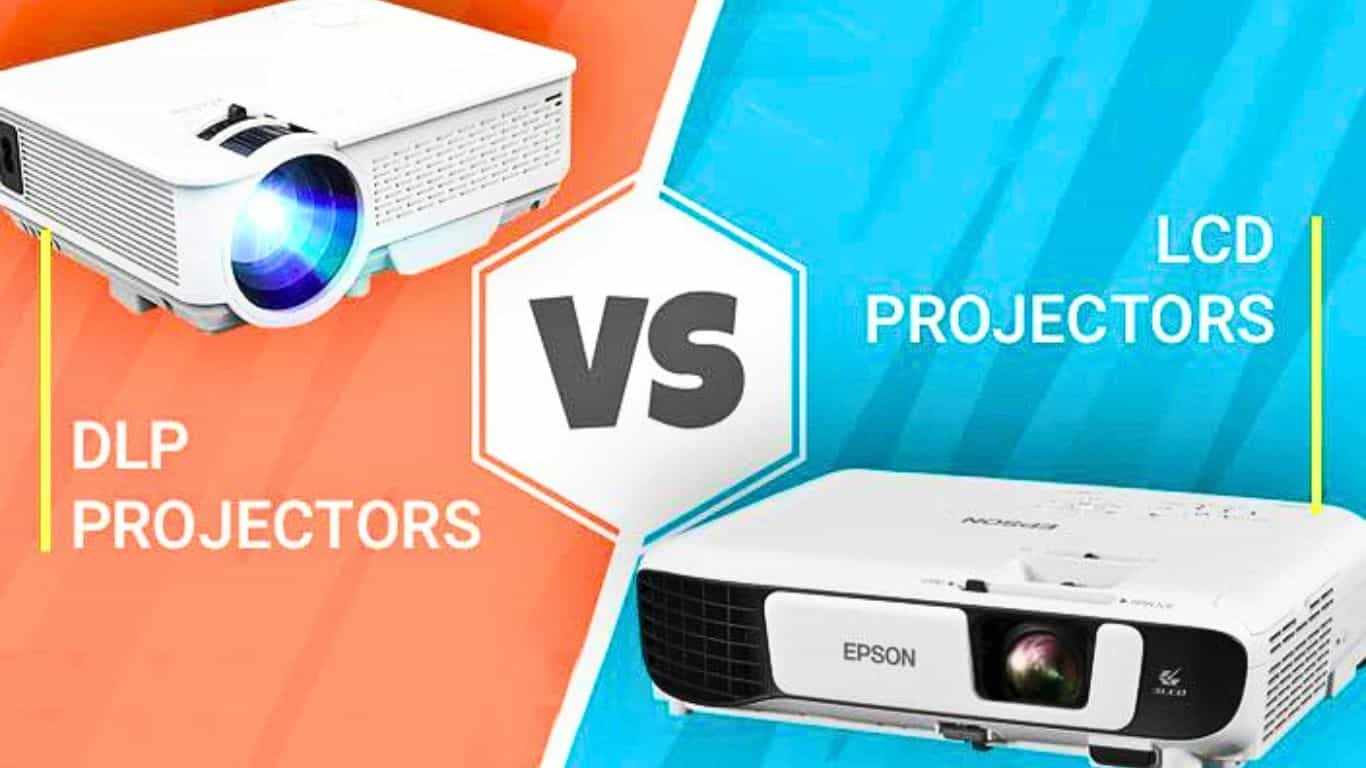

Due to LCD technology, colors are projected more precisely than with a DLP projector. LCDs also produce a sharper image. An LCD projector produces more light more efficiently.
However, there are certain disadvantages we should mention.
And the LCD projector is usually bulkier. The contrast of an LCD projector is less intense than that of a DLP projector, so the blacks on LCDs are gray.
The only extremely negative thing about an LCD projector is that its pixels die off as it ages, which means you will find holes in your projection and while DLP projectors sometimes lose light, a black frame is an easy one to fix around your screen.
Which Type of Projector is Best for Home Theater?
With all of this information, the best home theater projector is one with DLP technology. While both DLP and LCDs have many advantages and disadvantages, LCD projectors appear to have several disadvantages that users may disagree with.
Although today we compared DLP vs. LCD, the more significant battle compares DLP, LCD, LCOS, LED, and Laser projectors.
Each type of projector technology has its advantages and disadvantages. LEDs and LCDs have a longer lifespan, and LCOS technology looks great. Laser projectors have come a long way in terms of image quality too. However, a good comparison between all of them will help in assessing which is best for your home theater system.
For this article (DLP vs. LCD), however, we chose DLP as the winner for Best Home Theater.
Are Cinema Projectors LCD Or DLP?
DLP is seen in standalone projection units, in rear-projection TVs, and in a majority of digital cinema projections. LCD (Liquid Crystal Display) video projectors send light from a metal-halide lamp through a prism to display video, images, or computer data on a screen or flat surface.
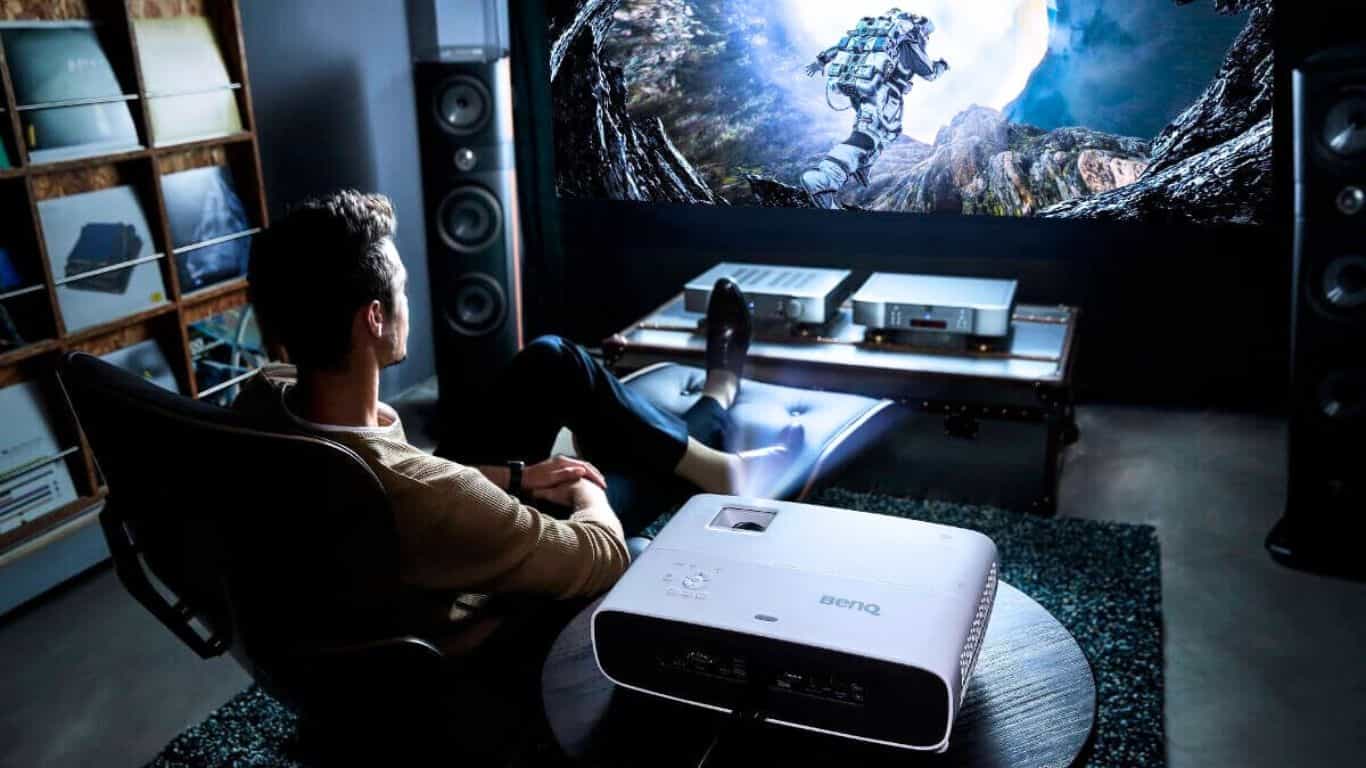

Which Is Better DLP Or LCD Projector?
On the one hand, LCD gives more bang for its buck with specific image quality, energy economy, and noise reduction benefits.
However, if you value quality over price and can trade in picture sharpness for color variance, portability, and smoother HD motion, then you won’t go wrong with DLP. They’re worth the extra bucks for that sweet dark contrast and depth of variegation.
Consider these factors to help you decide between a DLP or LCD projector
- DLP projectors provide sharp, high-quality projections with the potential for 3D capability as well.
- DLP projectors tend to have more mirrors and therefore more pixels to project your desired images and videos in higher definition.
- LCD projectors tend to be less expensive. However, they also require more maintenance and upkeep, particularly with changing out filters and preventing dust buildup.
- 3LCD projectors deliver exceptional brightness while using less power in many cases. They’re also typically quieter as projectors go.
Key Differences Between DLP and LCD Projectors
- The DLP projector projects the object onto the screen by reflecting the light, as opposed to the LCD projector transmitting the light to create the object on the screen.
- The LCD screen produces a wide range of colors suitable for video playback, while the DLP produces enough colors and these are adjustable.
- The pixel visibility in LCD is better than with DLP because the pixel positioning in LCD is done in such a way that there are large gaps between the pixels.
- Lack of convergence is the effect of color fringing created by horizontal and vertical lines that can often be seen on the LCD This occurs due to the misalignment of the different panel images. , this is not present in a DLP projector.
Pros And Cons Of LCD Projectors
Pros
- When compared to DLP projectors, the LCD projector produces sharper, superior picture quality despite its washed-out blacks and fewer color variations than DLPs.
- The LCD projector is more economical energy-wise if you wish to conserve energy as you watch movies in your home cinema.
- The LCD projector works more quietly than even the quietest of DLP projectors.
- You get more from an LCD projector of the same price range as a DLP one.
Cons
- It has worse contrast than DLP. Sure, it doesn’t suffer from color saturation and has sharper pictures, but its blacks look grayer than DLP.
- If you’re viewing a darker video or a videogame with loads of darkness on it, the blacks will look ashier than anything else, thus giving you the effect of a washed-out picture.
- It can only work with a standard lamp. It doesn’t use an LED lamp.
Pros And Cons Of DLP Projector
Pros
- The more modern DLP projector makes for a smaller, lighter unit since it uses microchip technology and micro-mirrors to work.
- A major flaw of LCD projectors that DLP projectors addressed is making the pixels less visible, thus the picture looks smoother and more photographic.
- If you’re viewing HDTV shows or HD movies on your 1080p or 4K DLP projector, you’ll get a more cinematic or film-like experience with the color quality of the image.
Cons
- While it has higher contrast and more colorful images than LCD, its image sharpness is poorer compared to what LCD brings to the table, especially modern LCD units.
- There are flashes and splashes of rainbow colors on the image with DLP, as though the picture has gone through a rainbow filter from Instagram.
Comparison Chart
In this section, we will provide you with a quick reference table as a means of refreshing your memory on the difference between LCD projectors and DLP projectors.
| Basis of Comparison | DLP Projector | LCD Projector |
|---|---|---|
| Stands for | Digital light processing | Liquid crystal display |
| Mechanism of action | Microscopic mirrors reflecting a spinning color wheel | Light transferred through a prism is separated and sent into different colored panels |
| Size | Smaller and portable | Larger and less portable |
| Pixel quality | Fewer pixels | More pixels |
| Color control | The brightness of colors can be altered only | A wide variety of settings can be adjusted |
| Color production | Immaculate colors are acceptable for their brightness. | Adequate colors and accuracy settings are available. |
| Misconvergence | Not visible | Present |
What to Look for When Buying a Projector?
When buying a projector, there are several key factors to consider to ensure you select the right one for your needs. Here are some important aspects to look for:
- Resolution
The projector’s resolution determines the level of detail and sharpness in the projected image. Common resolutions include 1080p (Full HD), 4K Ultra HD, and lower resolutions like 720p. Choose a resolution that matches your content and desired image quality.
- Throw Distance and Screen Size
Determine the throw distance (distance between projector and screen) required for your desired screen size. This will depend on the projector’s throw ratio. Ensure the projector can achieve the desired screen size in your intended viewing space.
- Connectivity
Check the available ports and connectivity options on the projector. Common connections include HDMI, VGA, USB, and audio jacks. Ensure the projector has the necessary ports to connect your desired devices, such as laptops, gaming consoles, or media players.
- Keystone Correction
Keystone correction helps adjust the projected image if the projector is not placed perpendicular to the screen. Look for a projector with keystone correction features to ensure a properly aligned image.
- Brightness (Lumens)
Consider the ambient lighting conditions in the room where you’ll use the projector. Higher lumens are beneficial for brighter environments, while lower lumens can work well in dimly lit rooms. Ensure the projector’s brightness is suitable for your intended use.
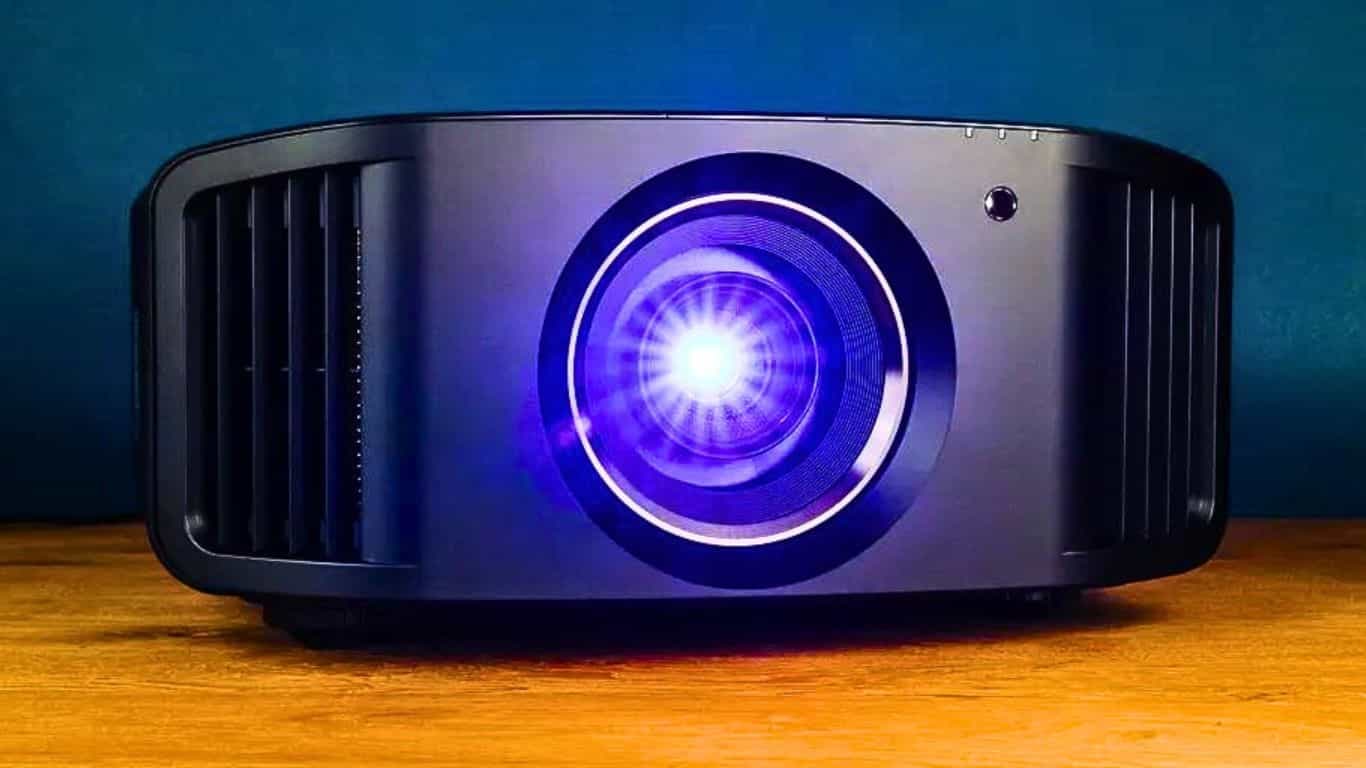

- Contrast Ratio
The contrast ratio represents the difference between the darkest and brightest parts of an image. A higher contrast ratio indicates better differentiation between dark and light areas, resulting in a more vibrant image. Consider the contrast ratio to achieve better image quality.
- Lamp Life
Projector lamps have a limited lifespan and will eventually require replacement. Check the estimated lamp life of the projector and consider the cost and availability of replacement lamps.
- Noise Level
Projectors generate some noise due to cooling fans. If you plan to use the projector in quiet environments, consider the noise level specifications and look for models with quieter operation.
- Extra Features
Consider additional features that may be important for your specific needs, such as built-in speakers, 3D capabilities, lens shift, wireless connectivity options, and image enhancement technologies.
- Price and Brand Reputation
Set a budget for your projector and compare different models within that range. Research and consider the reputation and reliability of different brands to ensure you select a projector from a reputable manufacturer.
DLP vs. LCD Projector – FAQs
Conclusion
After you’ve read through to the end of today’s post, you should be incredibly familiar with the exact nature and respective definitions of these two types of projectors. So it becomes easy for you to select the best one for you.
Both DLP and LCD projectors have their respective advantages and disadvantages, with the DLP projector being suitable when the user’s purpose is to display data with a low investment. In contrast, the LCD projector is more suitable for flawless color reproduction in video playback.
DLP and LCD projectors have many things in common. Both range in price. Although LCDs are more affordable.
